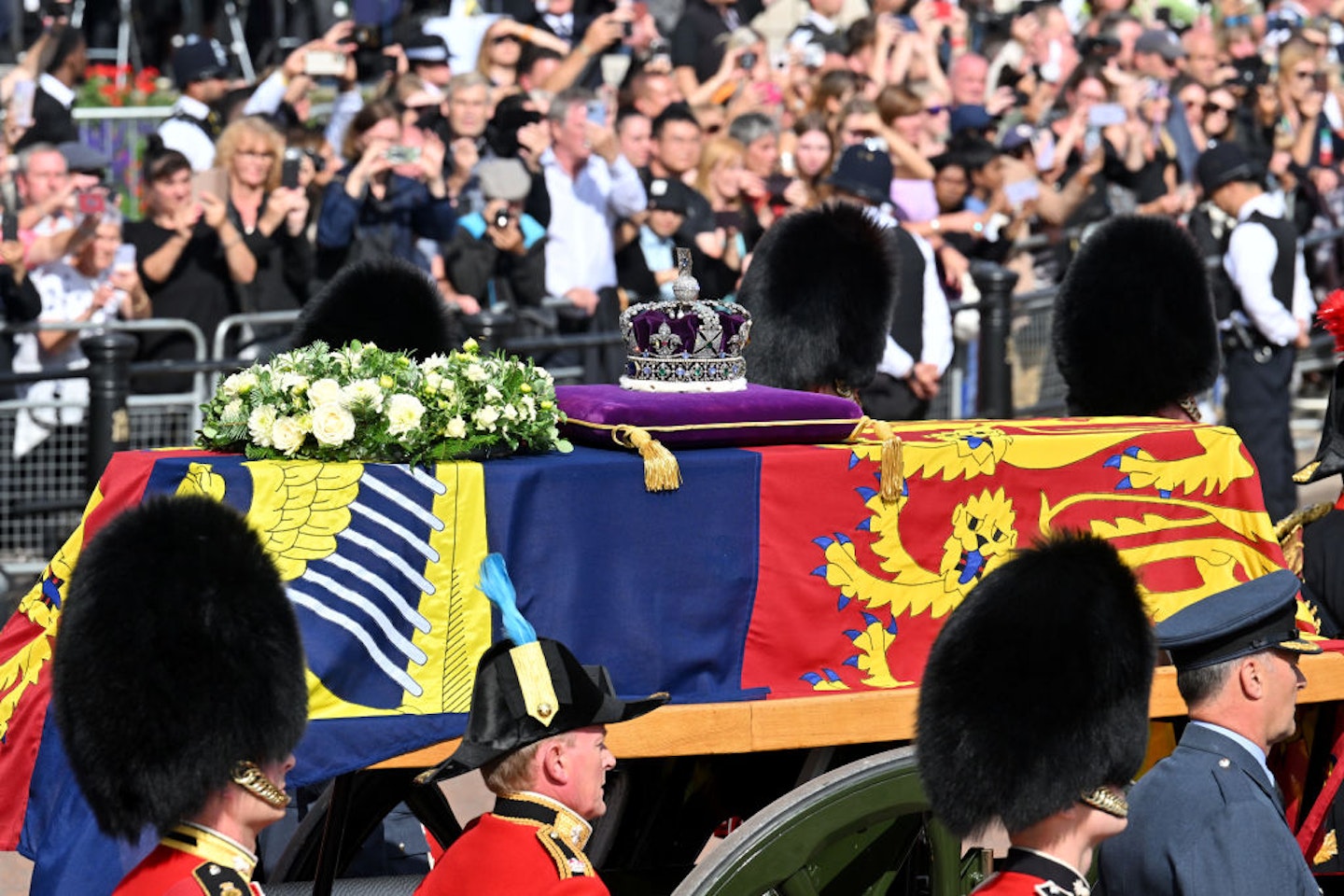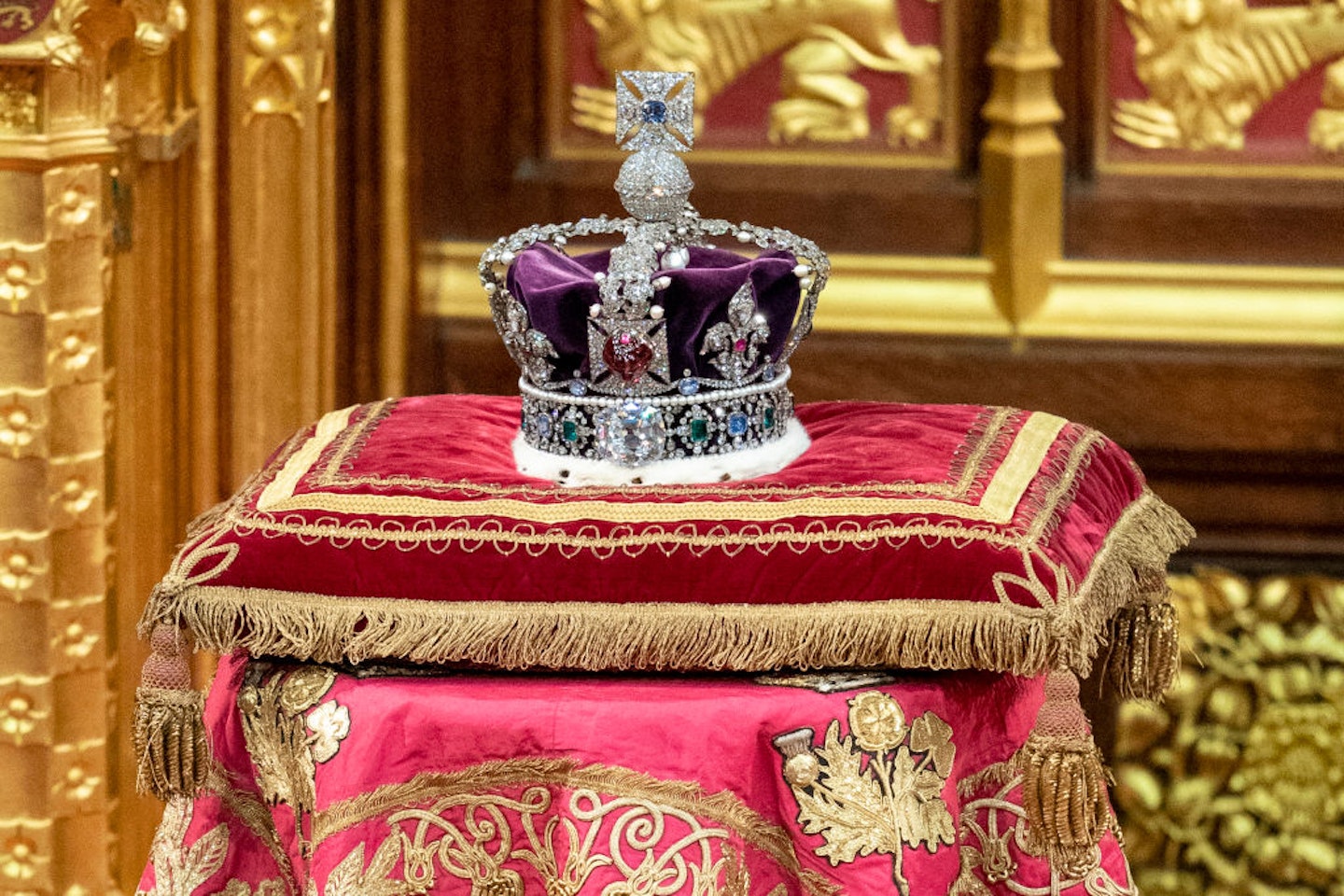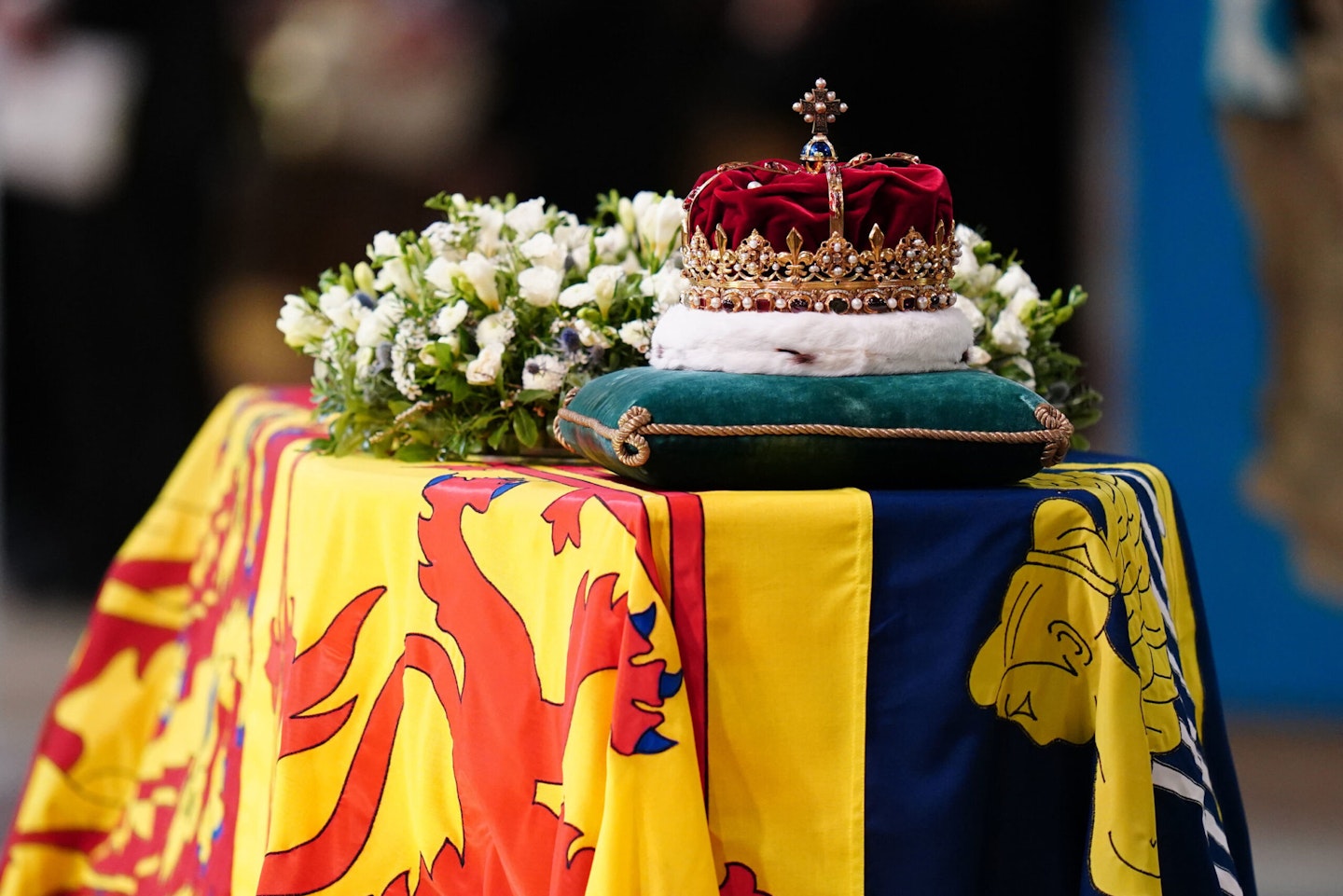Of all the symbols of our monarchy, none is more potent than the crown. What you might not have realised, however, is that several will play an important role during the period of mourning.

At today's funeral, we'll see the Imperial State Crown, which was placed on the coffin at the procession on Wednesday. According to Historic Royal Palaces, this is the crown that the monarch wears after they've been crowned at Westminster Abbey. Because it's also worn at the annual State Opening of Parliament, it's probably the crown that, whether you realised it or not, you've seen the most. The Imperial State Crown, which was made for King George VI's Coronation, is set with 2,868 diamonds, 17 sapphires, 11 emeralds, 269 pearls, and four rubies - and includes some of the most famous gemstones in the world: the Black Prince's Ruby, the Stuart Sapphire, and the Cullinan II diamond.

At last week's vigil in Edinburgh, held at St Giles' Cathedral, a crown was placed on top of the coffin of Queen Elizabeth II. This was the Crown of Scotland, which, according to The Royal Family, is part of the oldest regalia in the British Isles, dating back to the late 15th and early 16th centuries. It weighs 1.64kg and was made in its present form for King James V, having been refashioned out of a damaged crown in 1540, by the goldsmith John Mosman. Unlike the English Crown Jewels, Oliver Cromwell failed in his attempt to destroy the Scottish Crown Jewels. They were smuggled out of Dunnottar Castle, near Aberdeen, and were buried until 1660.

